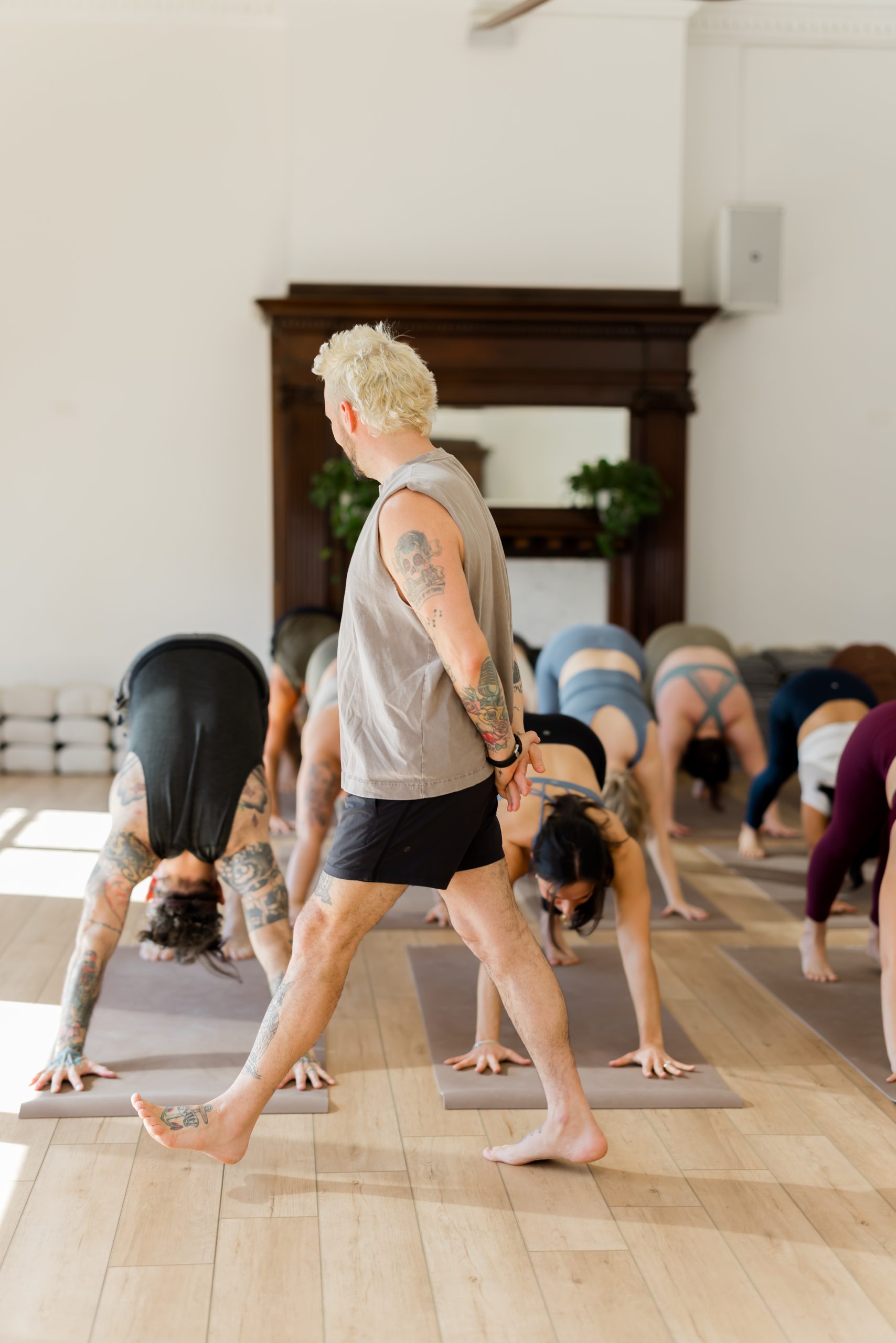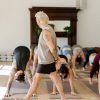
Why We Say “Your Knee” Instead of “The Knee”: Language, Lineage & the Heart of Yoga Practice
At our most recent in-person intensive, a great question came up regarding the way we cue poses in yoga. Typically, we avoid using gerunds like “moving your arms up” or “walking to the top of your mat.” Instead, we go with more active, intentional verbs: “move your arm,” “walk to the top of your mat.” We also tend to use personal pronouns—“your arm,” “your knee,”—rather than the more detached “the arm,” “the knee.”
One student, referencing the work of Jon Kabat-Zinn (who is a deeply respected teacher and voice in the mindfulness world), asked: “Why do we say your knee instead of the knee?”
It’s a subtle difference. But like so much in yoga, subtle doesn’t mean small. That one little word—your—opens the door to a bigger philosophical conversation.
The Language of Identity
Let’s zoom out for a second. When we teach yoga, we’re not just cueing bodies—we’re speaking to people. And the words we use carry philosophical weight, whether we realize it or not.
In Buddhist mindfulness traditions (which influence Kabat-Zinn’s work), there’s often a movement toward depersonalization—to see thoughts as just thoughts, sensations as just sensations, the body as “the body.” This reflects the Buddhist understanding that the self is not fixed. That we are, in essence, part of one vast, ever-changing ocean of being. The goal is not to reinforce individual identity but to release it, to dissolve the sense of “me” and “mine.”
Hindu philosophy, which underpins the lineage of classical yoga, offers a different view. Yes, we are part of the whole—but we are also individual drops in that vast ocean. There is a soul, a spark, an Atman—and that Atman is both distinct and connected to the greater Self, or Brahman. It’s not about erasing identity, but recognizing its divinity. You are not your body—but your body is still yours, and it’s the vehicle through which we practice.
So when we say “your arm,” or “your breath,” we’re honoring that you are a person with a body, a history, a spirit, and agency in your own practice. We’re speaking to the drop and the ocean at the same time.
Why It Matters in the Classroom
Language shapes experience. When I say “move your arm,” I’m inviting you into the pose. I’m inviting embodiment, ownership, and awareness. It’s not about ego—it’s about connection.
On the other hand, saying “move the arm” can feel clinical or dissociative. It can be helpful in certain meditation contexts, where the aim is to observe from a distance. But in an asana class, where we’re asking students to engage, feel, and participate, personal pronouns bring students into relationship with their bodies and the practice itself.
It’s also a matter of clarity. “Your right foot steps forward” lands differently in the nervous system than “the right foot steps forward.” Especially in a group setting, that tiny extra word can help people connect the instruction to their actual, lived body.
Precision with Compassion
We’re not saying one approach is right and the other is wrong. Jon Kabat-Zinn’s work is profoundly valuable, and his influence on how we understand mindfulness is immeasurable. But yoga is not just mindfulness. It’s also movement. It’s also lineage. It’s relationship.
In that sense, our use of your is both philosophical and practical. It’s rooted in a belief that you, as a student, are not an anonymous object or just a collection of parts. You are a conscious being—living, breathing, feeling. And our job as teachers is to speak to that, with respect and clarity.







